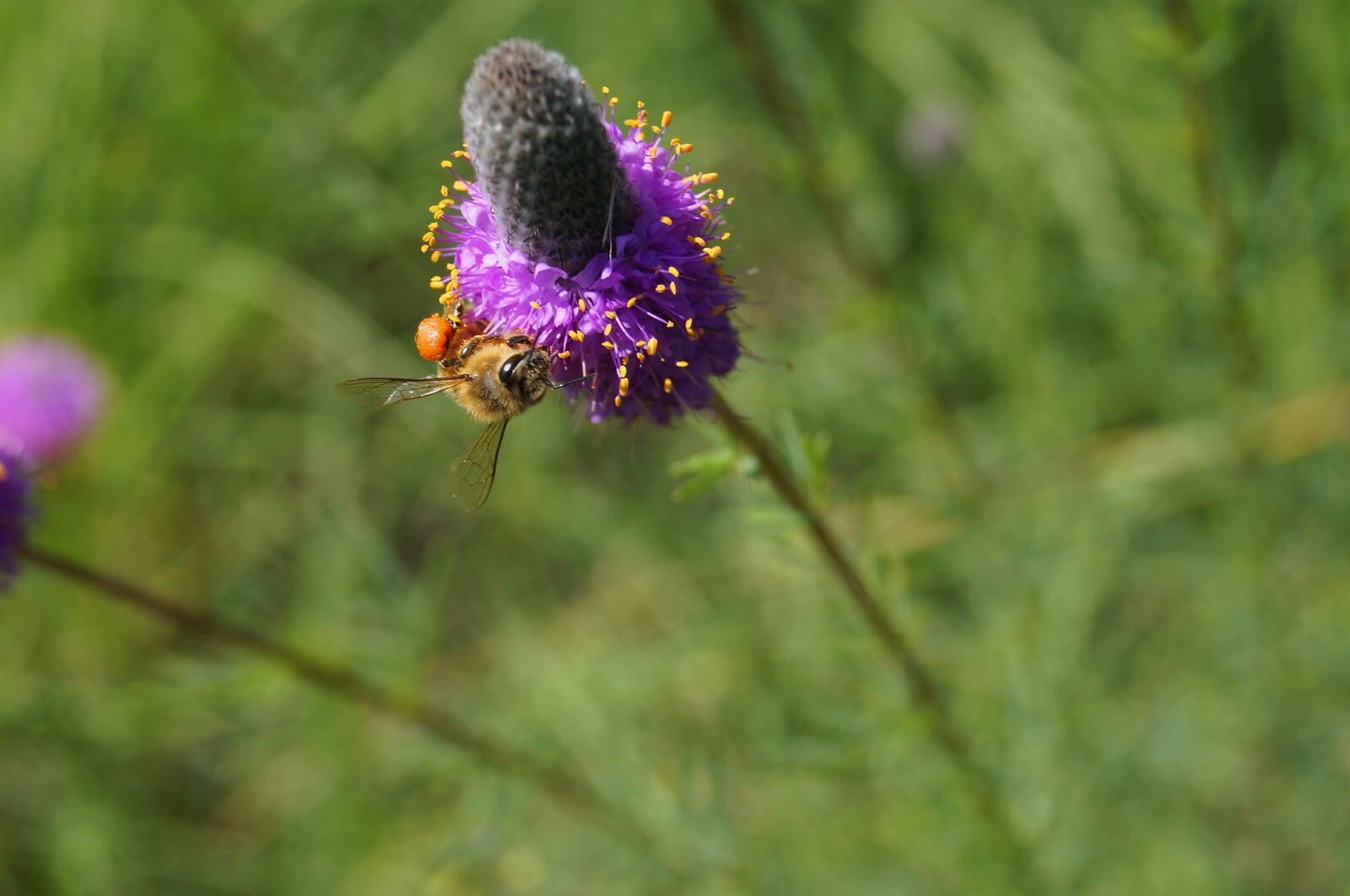Dalea purpurea
Purple prairie clover Description:
Dalea purpurea, commonly known as Purple prairie clover, is a herbaceous perennial plant in the Fabaceae family. It is native to North America and can be found throughout the central and western parts of the continent. The plant typically grows to be about 1-3 feet tall, with a spread of up to 18 inches.
Dalea purpurea produces dense, cylindrical spikes of purple flowers that bloom in mid to late summer, typically from July to September. The flowers are attractive to butterflies and other pollinators, making it a popular choice for butterfly gardens and other pollinator habitats. The plant is also a nitrogen fixer, which means it has the ability to convert atmospheric nitrogen into a usable form for other plants.
Purple prairie clover is a drought-tolerant plant that is well adapted to the prairies and other open habitats. It is often used for ecosystem restoration and soil stabilization projects, as it has a deep root system that helps to prevent erosion and improve soil health. The plant is also a popular choice for native plant landscaping, as it is low maintenance and requires little watering or fertilizer once established.
Native Range:
Purple prairie clover ranges from as far West as Washington state all the way to Georgia. That said, it is most commonly found in the central United States from Minnesota to Texas.
Standard Plant Information:
Plant Height: 1' - 3'
Bloom Time: June - August
Preferred Habitat: Does well full sun. Often found in dry prairies and rocky areas.
Sowing:
For most homeowners, the best option is to scatter seed on the ground by hand broadcasting at a minimum of 16-64 pls ounces per acre. For even coverage, we recommend that you broadcast seed in perpendicular rows across the site to ensure even coverage.
You’ll want to broadcast any grass seed first, which will get raked into the soil lightly. Next, it is ideal to mulch the area lightly with either a clean (no seed) straw or preferably with our native Little Bluestem straw, sold at our retail garden centers. After a light mulching is complete, now it’s time to broadcast your native wildflower seeds, which should not be raked into the soil. A good rain or watering is sufficient to cover the seed.
Planting:
Simply dig a hole in the soil slightly larger than the plant’s roots. Ensure that the soil line of the plant is maintained during the transfer (i.e. the plant should be at the same level with the ground as it was in the pot). Pack any loose dirt back around the plant and make sure you water it well the same day to ensure it has the best chance of survival.








